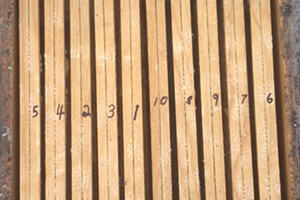
First I must thank Jerry Hayes. His Classroom questions and answers often inspire my Beekeeping Topics and that will be the case this time. At some point in the Comb Honey Corner, I touched on this topic. At that writing we covered the topic but only as it related to comb honey production. The topic of how to super your colonies of bees needs more explanation.
The first thing to do is separate your beekeeping operation into a category.
- Commercial beekeeper: typically have at least 1,000 or more likely 2,000 colonies of bees and makes a living from keeping honey bees. Provides pollination services as a major source of income. Additional income from hive products, including honey propolis, and beeswax helps the bottom line.
- Sideline beekeeper: has 500 hives or less, but at least 2 apiaries, and keeps bees as a part-time job to supplement income. May or may not provide bees for pollination services for extra income. Some sideliners sell multiple hive products such as wax, pollen, propolis and maybe nucleus colonies.
- Hobby beekeeper: Has only one apiary with 2-3 colonies, but 10 or even 20 is possible. Uses honey produced for gifts, and income to support beekeeping hobby. Provides pollination as a free benefit to neighbors. May use hive products as gifts and for sale.
- Many beekeepers are commercial or sideline producers of bees and queens for packages and nucleus colonies. Obviously, supering is not an issue for commercial queen and bee production because the honey their bees consume makes more of their product: Bees and Queens
Commercial beekeepers have a major expense involved with moving bees from location to location — not only pollination service but also for honey production and wintering in warm climates. Successful commercial beekeepers produce nucleus colonies and queens at a record rate to replace winter losses. A 2,000 colony operation probably has two sets of locations, one summer, one winter. Going around to super that many bees will need to be as efficient as possible. The obvious solution is to load all the supers needed in one trip to each apiary. I doubt this is probable as some hives in an apiary will be stronger than others. A second trip is most likely to put on.…
Photo Captions
Turning the super around 180 degrees, front to back, also makes honey production more efficient and faster.


